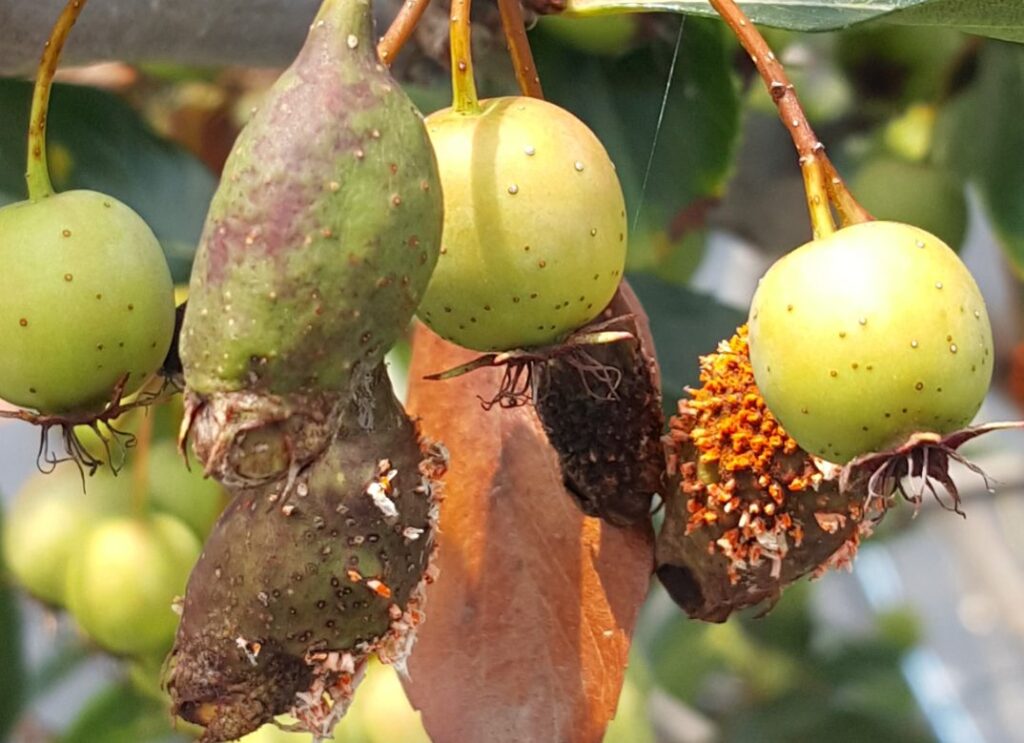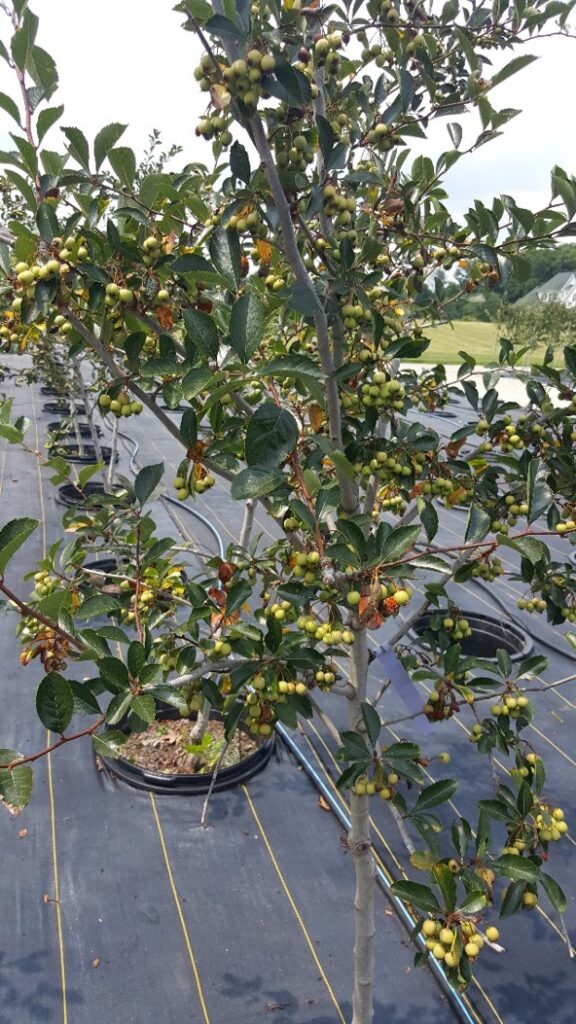After you have decided on the best species and cultivar (right plant, right place!) for a location, it’s time to inspect the plants from the nursery or garden center. What should you be looking for when inspecting trees prior to transplanting into the landscape? Here are a few:

Figure 1. Crossing branches can lead to tree failure.
- Look for structural defects (Fig. 1).
- Ensure root growth is sufficient in the pot or burlap.
- Inspect plants for signs and/or symptoms of insects, disease, and abiotic stress (Figs. 2 and 3).
- Ensure root growth is sufficient.
- Inspect plants for yearly growth.
- Figure 2. Selecting plants that have pests can lead to an infestation into your client’s landscape.
- Figure 3. Selecting plants that have pests can lead to an infestation into your client’s landscape.
Structural defects, especially in trees, can cause future problems as the plant increases in size, leading to failure. This can include multiple leaders, crossing stems, or trunk defects.
Root growth should adequately fill out the pot or be located to the outer edge of the burlap. In addition, roots should not be pot-bound.
Signs or symptoms of disease or insects should be inspected thoroughly. By accepting plants that are infected, you could be introducing pests into your client’s landscape.
By inspecting a plant’s internode length, you can determine the amount of growth over the preceding years. If a plant has short internode length over the last year or so, you can determine if that plant has been under stress or performed poorly over the past growing season(s).
Why should you concern yourself with the quality of the stock that you select? Here are a few reasons:
- Ensure longevity of the plant (especially important for trees).
- Reduced symptoms of transplant shock.
- Reduced chance for plant failure.
- More rapid transplant success.
- Happier clients!
When planting a new plant, one of the main concerns is to reduce transplant shock. The primary reason that plants experience transplant shock is due to a lack of water. Smaller plant material will be able to withstand a recovery from transplant shock than larger material. By insuring a reliable irrigation/water source, you can ensure less transplant shock. It’s important to educate your clients on the proper amount of water because some homeowners will apply too much water, which can cause many problems as well.
The American Nursery Stock Standard, via AmericanHort, was updated in 2014. This is a guide that is very useful at determining the best practices for selecting plants.
Resources:
- American Nursery Stock Standard, Z-60.1
- Tree Planting Part One: Choosing a Tree
- Tree Installation: Process and Practices
If you have any questions about plant material, please email me at daniel38@purdue.edu to discuss.

